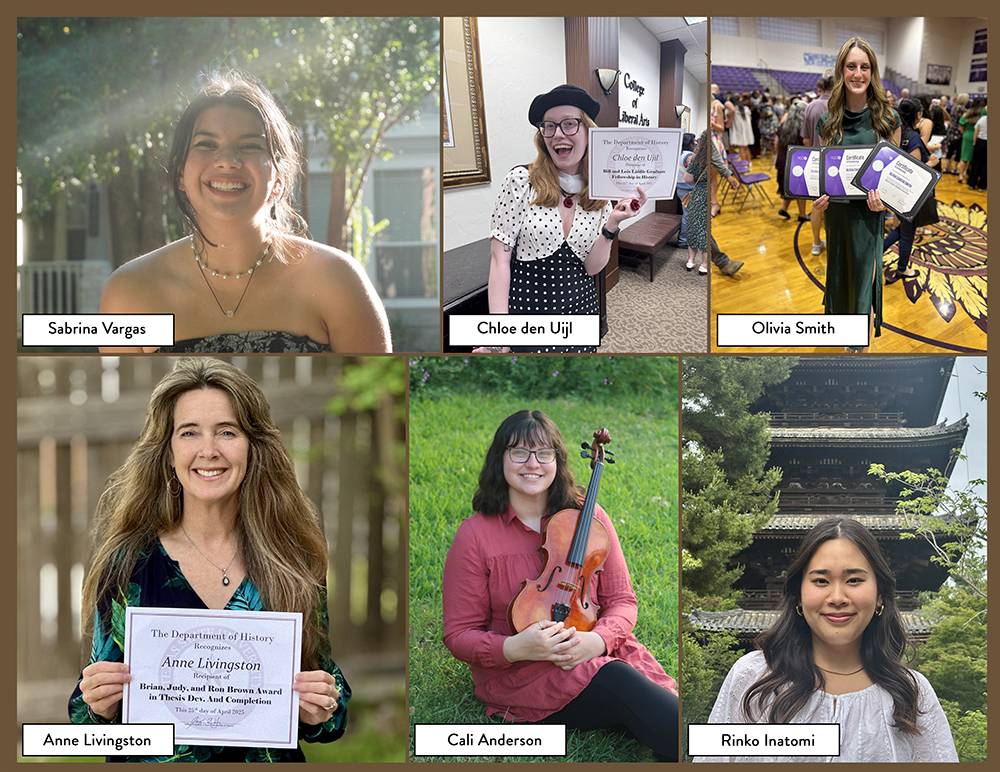KU centers team up to introduce local students to STEM fields in physical performance – KU News

University of Kansas Initiative Aligns with Sustainable Development Goals Through Sports Science and STEM Education
A strategic partnership at the University of Kansas has been established to advance key United Nations Sustainable Development Goals (SDGs) by integrating STEM education with physical performance training. The collaboration between the Center for Educational Opportunity Programs (CEOP) and the Well-Fit Center for Youth Wellness and Fitness aims to provide middle and high school students with career development opportunities and foundational health knowledge, directly contributing to several global targets.
Program Objectives and Alignment with SDGs
The Jayhawk Performance initiative, a core component of this partnership, is structured to address multiple SDGs by providing holistic support to students in the Upward Bound and GEAR UP programs.
SDG 3: Good Health and Well-being
The program places a significant emphasis on promoting healthy lifestyles and well-being among young people. Key activities are designed to:
- Provide early access to fitness fundamentals.
- Instruct students on proper and safe exercise techniques, including weightlifting.
- Educate participants on the critical importance of nutrition for physical performance and overall health.
Korri Hall, director of GEAR UP KCMO, noted, “This program gives our students early access to fitness fundamentals… how to play safely, lift properly and understand the importance of nutrition.”
SDG 4: Quality Education
The partnership is fundamentally committed to providing inclusive and equitable quality education by offering unique, hands-on learning experiences. The educational objectives include:
- Delivering a hands-on curriculum that allows students to explore viable career paths.
- Building foundational skills in Science, Technology, Engineering, and Mathematics (STEM).
- Exposing students to the scientific principles underpinning human performance, including sports medicine and strength and conditioning.
“We’re really excited to offer students not just an academic class where they prepare for the upcoming school year, but a hands-on course where they can explore a career path and build foundational STEM skills,” stated Marilynn Chavez, assistant director of Upward Bound Math & Science.
SDG 8: Decent Work and Economic Growth
By connecting education with practical application, the initiative prepares students for future employment and contributes to sustainable economic growth. The program focuses on:
- Introducing students to potential careers in high-growth STEM and human performance fields.
- Providing early, hands-on exposure to performance science and fitness technologies.
- Fostering meaningful connections between physical fitness, scientific inquiry, and future career opportunities.
SDG 10: Reduced Inequalities
The program specifically targets students in Shawnee, Douglas, Leavenworth, and Wyandotte counties through established outreach programs, directly addressing the goal of reducing inequalities in access to educational and career development opportunities. By leveraging the Upward Bound and GEAR UP frameworks, the partnership ensures that students from diverse backgrounds gain access to university-level resources, faculty, and specialized training.
Implementation and Collaborative Framework (SDG 17: Partnerships for the Goals)
This initiative exemplifies the power of partnerships in achieving sustainable development. The collaboration between CEOP and the Well-Fit Center within the Achievement & Assessment Institute (AAI) demonstrates an effective model for breaking down institutional silos to deliver integrated, student-centered experiences.
Program Structure
- High School Students: The “Pathways to Success: From Health to High Performance” summer program for Upward Bound participants.
- Middle School Students: Parallel programs with age-appropriate content for students in GEAR UP KCK and GEAR UP KCMO.
- Core Activities: All participants engage in physical training, interact with university faculty, and gain experience with modern fitness technologies.
Quincy Johnson, a program coordinator for Jayhawk Performance, highlighted the unique value of this collaborative structure, stating, “These programs offer something I don’t think you’ll find at most institutions — early, hands-on exposure to STEM and performance science through a structured academic partnership.”
Which SDGs are addressed or connected to the issues highlighted in the article?
- SDG 3: Good Health and Well-being
- SDG 4: Quality Education
- SDG 8: Decent Work and Economic Growth
- SDG 10: Reduced Inequalities
- SDG 17: Partnerships for the Goals
What specific targets under those SDGs can be identified based on the article’s content?
SDG 3: Good Health and Well-being
- Target 3.4: By 2030, reduce by one-third premature mortality from non-communicable diseases through prevention and treatment and promote mental health and well-being. The article highlights that the program promotes “healthy habits,” teaches students “how to play safely, lift properly and understand the importance of nutrition,” which are all preventative measures contributing to this target.
SDG 4: Quality Education
- Target 4.4: By 2030, substantially increase the number of youth and adults who have relevant skills, including technical and vocational skills, for employment, decent jobs and entrepreneurship. The program is designed to provide students with “hands-on experience in sports medicine, exercise science, and strength and conditioning” and to “build foundational STEM skills,” which are relevant skills for future employment.
- Target 4.7: By 2030, ensure that all learners acquire the knowledge and skills needed to promote sustainable development, including, among others, through education for sustainable lifestyles. The program’s focus on “wellness,” “fitness fundamentals,” and “healthy habits” directly contributes to education for sustainable lifestyles.
SDG 8: Decent Work and Economic Growth
- Target 8.6: By 2020, substantially reduce the proportion of youth not in employment, education or training. The program gives students “meaningful career exploration opportunities” and introduces them to “potential careers in STEM” and “human performance,” aiming to prepare them for future education and employment.
SDG 10: Reduced Inequalities
- Target 10.2: By 2030, empower and promote the social, economic and political inclusion of all. The article specifies that the partnership supports students in “Upward Bound and GEAR UP programs,” which are initiatives designed to provide educational opportunities and support to students from specific communities (Shawnee, Douglas, Leavenworth, Wyandotte counties, and the Kansas City metropolitan area), thereby promoting educational inclusion.
SDG 17: Partnerships for the Goals
- Target 17.17: Encourage and promote effective public, public-private and civil society partnerships. The entire article is about a “new partnership” between two centers within the University of Kansas—the Center for Educational Opportunity Programs (CEOP) and the Well-Fit Center for Youth Wellness and Fitness (Well-Fit)—to achieve shared educational and wellness goals.
Are there any indicators mentioned or implied in the article that can be used to measure progress towards the identified targets?
SDG 3: Good Health and Well-being
- Implied Indicator: Number of students who receive instruction on fitness fundamentals, safe play, proper lifting, and nutrition. The article states the program gives students “early access to fitness fundamentals” and teaches them “how to play safely, lift properly and understand the importance of nutrition.”
SDG 4: Quality Education
- Implied Indicator: Number of students participating in the hands-on course that builds foundational STEM skills. The article mentions a “hands-on course where they can explore a career path and build foundational STEM skills.”
- Implied Indicator: Number of students who gain hands-on experience with fitness technologies. The article notes that “students will engage with university faculty and staff and gain hands-on experience with fitness technologies.”
SDG 8: Decent Work and Economic Growth
- Implied Indicator: Number of students exposed to career exploration opportunities in STEM and human performance. The article states the program will “introduce potential careers in STEM” and give students “meaningful career exploration opportunities.”
SDG 10: Reduced Inequalities
- Implied Indicator: Number of students from Upward Bound and GEAR UP programs in specified counties (Shawnee, Douglas, Leavenworth, Wyandotte) and metropolitan areas (Kansas City) participating in the initiative.
SDG 17: Partnerships for the Goals
- Explicit Indicator: The formation of a structured academic partnership between the Center for Educational Opportunity Programs (CEOP) and the Well-Fit Center for Youth Wellness and Fitness (Well-Fit). The article is centered on this partnership.
SDGs, Targets, and Indicators Table
| SDGs | Targets | Indicators |
|---|---|---|
| SDG 3: Good Health and Well-being | 3.4 Reduce premature mortality from non-communicable diseases and promote well-being. | Number of students taught fitness fundamentals, safe play, proper lifting, and nutrition. |
| SDG 4: Quality Education | 4.4 Increase the number of youth with relevant skills for employment.
4.7 Ensure learners acquire knowledge for sustainable lifestyles. |
Number of students participating in hands-on STEM courses.
Number of students gaining experience with fitness technologies. |
| SDG 8: Decent Work and Economic Growth | 8.6 Reduce the proportion of youth not in employment, education or training. | Number of students exposed to career exploration in STEM and human performance. |
| SDG 10: Reduced Inequalities | 10.2 Empower and promote the social and economic inclusion of all. | Number of students from Upward Bound and GEAR UP programs participating in the initiative. |
| SDG 17: Partnerships for the Goals | 17.17 Encourage and promote effective partnerships. | The existence of the structured academic partnership between CEOP and the Well-Fit Center. |
Source: news.ku.edu

What is Your Reaction?
 Like
0
Like
0
 Dislike
0
Dislike
0
 Love
0
Love
0
 Funny
0
Funny
0
 Angry
0
Angry
0
 Sad
0
Sad
0
 Wow
0
Wow
0













































































